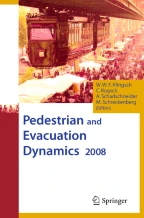
Occupant descent down stairwells during building evacuations is typically described by measurable engineering variables such as stairwell geometry, speed, density, and pre-evacuation delay. In turn, predictive models of building evacuation use these variables to predict the performance of egress systems for building design, emergency planning, or event reconstruction. This paper provides a summary of literature values for movement speeds and compares these to several new fire drill evacuations. Movement speeds in the current study are observed to be quite similar to the range of literature values. Perhaps most importantly though, the typical engineering parameters are seen to explain only a small fraction of the observed variance in occupant movement speeds. This suggests that traditional measures form an incomplete theory of people movement in stairs. Additional research to better understand the physiological and behavioral aspects of the evacuation process and the difference between fire drill evacuations and real fire emergencies are needed.
This is a preview of subscription content, log in via an institution to check access.
eBook EUR 160.49 Price includes VAT (France)
Softcover Book EUR 210.99 Price includes VAT (France)
Hardcover Book EUR 210.99 Price includes VAT (France)
Tax calculation will be finalised at checkout
Purchases are for personal use only